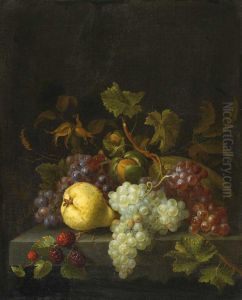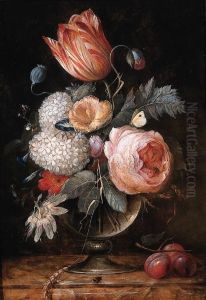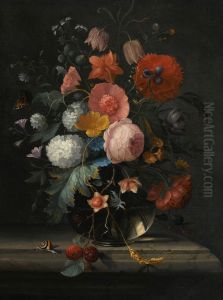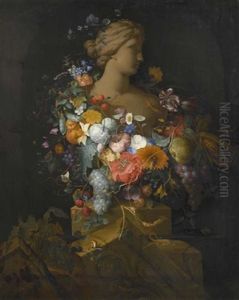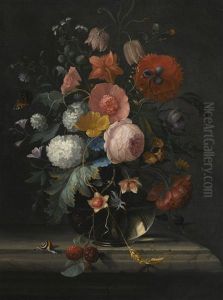Pieter Gallis Paintings
Pieter Gallis was a Dutch Golden Age painter, born in 1633 in Enkhuizen, Netherlands. Although not as widely known as some of his contemporaries, Gallis made a significant contribution to the Dutch tradition of still-life and genre painting that was flourishing during the 17th century.
Gallis's work typically depicted scenes of everyday life as well as still-lifes. His paintings often included detailed and realistic representations of food, flowers, and objects, showcasing his skill in rendering textures and materials with great precision. The Dutch Golden Age was a period where art was thriving due to economic prosperity, and artists like Gallis contributed to the era's rich tapestry of visual culture by celebrating the beauty of the mundane.
Little is known about Gallis's life and training, but his works suggest that he was well-versed in the techniques and themes popular among Dutch artists of the time. It is presumed that he might have been influenced by or worked with some of the prominent painters of the era, though specific details about his artistic education remain scarce.
Gallis's paintings are characterized by their warm palette and the interplay of light and shadow, a technique that was highly regarded in Dutch still-life painting. His compositions are carefully arranged, often imbued with a sense of abundance and the transience of life, themes that are typical of the memento mori sub-genre within still lifes.
Pieter Gallis died in 1697 in Hoorn, Netherlands. Although he may not have achieved the same level of fame as some of his peers, his works provide a valuable glimpse into the domestic and culinary culture of the Dutch Golden Age. Today, Gallis's paintings can be found in various art collections and museums, where they continue to be appreciated for their craftsmanship and historical value.


